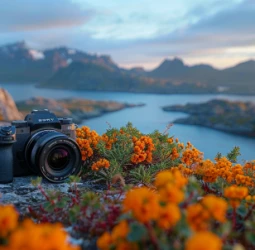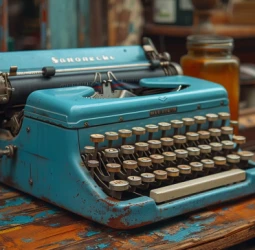Cinematic techniques are the tools and methods used by filmmakers to convey their message and tell a story through the medium of film. These techniques involve the use of camera angles, lighting, sound, and editing to create a specific mood, atmosphere, and visual style in a film. They are crucial in the art of filmmaking and play a significant role in the overall impact and success of a movie.
One of the most essential cinematic techniques is the use of camera angles. The angle at which a scene is shot can greatly influence the audience's perception and understanding of the characters and their surroundings. For instance, a low angle shot, where the camera is placed below the subject, can make the character appear powerful and dominant, while a high angle shot, where the camera is placed above the subject, can make the character seem vulnerable and weak. Directors carefully choose camera angles to create a desired effect and evoke certain emotions in the audience.
Lighting is another crucial cinematic technique that can greatly enhance the visual appeal of a film. The use of light and shadows can create a sense of depth and add a layer of symbolism to a scene. For example, a brightly lit scene can convey a sense of happiness and joy, while a dark and shadowy scene can create a feeling of fear and suspense. Lighting can also be used to highlight specific characters or objects in a scene, directing the audience's attention to them.
Sound is an often overlooked but equally important cinematic technique. It includes dialogue, music, and sound effects, all of which contribute to the atmosphere and mood of a film. Dialogue is not just about the words spoken by the characters, but also the way they are delivered. A skilled filmmaker can use dialogue to reveal a character's personality and emotions. Music, on the other hand, can greatly enhance the emotional impact of a scene. It can create tension, suspense, or evoke feelings of nostalgia and romance. Sound effects, such as gunshots or explosions, can add a sense of realism and intensity to action scenes.
Editing is the process of assembling individual shots into a cohesive sequence. It is a crucial cinematic technique that helps in creating a smooth and coherent narrative. Through editing, a director can control the pace and rhythm of a film, making it more engaging for the audience. It also allows for the manipulation of time and space, as seen in flashbacks and montages. A well-edited film can create a seamless flow of events and keep the audience invested in the story.
In addition to these techniques, there are many others that filmmakers use to bring their vision to life. These include special effects, makeup, and costume design, all of which contribute to the overall aesthetic of a film. Each technique has its purpose and can greatly impact the audience's viewing experience.
In conclusion, cinematic techniques are essential elements of filmmaking that help in creating a powerful and impactful story. They allow directors to convey their message, evoke emotions, and immerse the audience in the world of the film. Without these techniques, movies would not have the same impact and would not be as visually captivating. As technology continues to advance, we can expect to see even more innovative and creative use of cinematic techniques in the future.
One of the most essential cinematic techniques is the use of camera angles. The angle at which a scene is shot can greatly influence the audience's perception and understanding of the characters and their surroundings. For instance, a low angle shot, where the camera is placed below the subject, can make the character appear powerful and dominant, while a high angle shot, where the camera is placed above the subject, can make the character seem vulnerable and weak. Directors carefully choose camera angles to create a desired effect and evoke certain emotions in the audience.
Lighting is another crucial cinematic technique that can greatly enhance the visual appeal of a film. The use of light and shadows can create a sense of depth and add a layer of symbolism to a scene. For example, a brightly lit scene can convey a sense of happiness and joy, while a dark and shadowy scene can create a feeling of fear and suspense. Lighting can also be used to highlight specific characters or objects in a scene, directing the audience's attention to them.
Sound is an often overlooked but equally important cinematic technique. It includes dialogue, music, and sound effects, all of which contribute to the atmosphere and mood of a film. Dialogue is not just about the words spoken by the characters, but also the way they are delivered. A skilled filmmaker can use dialogue to reveal a character's personality and emotions. Music, on the other hand, can greatly enhance the emotional impact of a scene. It can create tension, suspense, or evoke feelings of nostalgia and romance. Sound effects, such as gunshots or explosions, can add a sense of realism and intensity to action scenes.
Editing is the process of assembling individual shots into a cohesive sequence. It is a crucial cinematic technique that helps in creating a smooth and coherent narrative. Through editing, a director can control the pace and rhythm of a film, making it more engaging for the audience. It also allows for the manipulation of time and space, as seen in flashbacks and montages. A well-edited film can create a seamless flow of events and keep the audience invested in the story.
In addition to these techniques, there are many others that filmmakers use to bring their vision to life. These include special effects, makeup, and costume design, all of which contribute to the overall aesthetic of a film. Each technique has its purpose and can greatly impact the audience's viewing experience.
In conclusion, cinematic techniques are essential elements of filmmaking that help in creating a powerful and impactful story. They allow directors to convey their message, evoke emotions, and immerse the audience in the world of the film. Without these techniques, movies would not have the same impact and would not be as visually captivating. As technology continues to advance, we can expect to see even more innovative and creative use of cinematic techniques in the future.



 admin
admin















